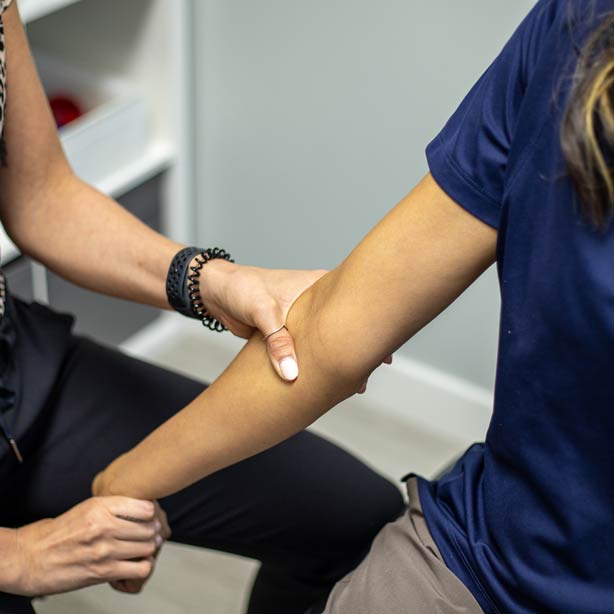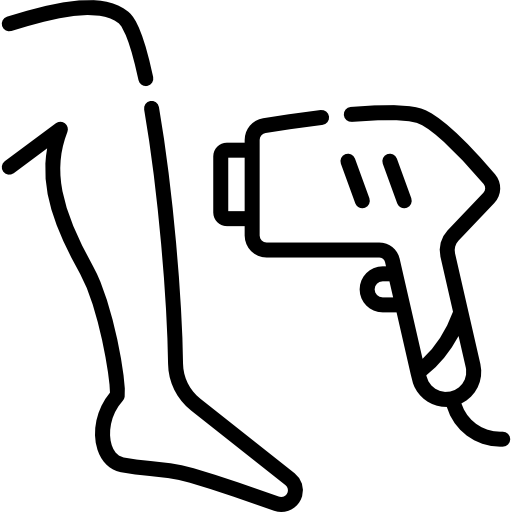Chiropractor, B.Sc. Kin, ART
Active Release Techniques is a hands-on, state-of-the-art soft tissue system/movement-based technique that treats problems with muscles, tendons, ligaments, fascia, and nerves. At Encompass Sports Therapy, our chiropractors use Active Release in many of their treatments.
Headaches, back pain, carpal tunnel syndrome, shin splints, shoulder pain, sciatica, plantar fasciitis, knee problems, and tennis elbow are just a few of the many conditions that can be resolved quickly and permanently with ART. These conditions all have one important thing in common: they are often a result of overused muscles.
Over-used muscles (and other soft tissues) change in three important ways. Acute conditions (pulls, tears, collisions, etc), accumulation of small tears (micro-trauma) and not getting enough oxygen (hypoxia).
Each of these factors can cause your body to produce tough, dense scar tissue in the affected area. This scar tissue binds up and ties down tissues that need to move freely. As scar tissue builds up, muscles become shorter and weaker, the tension on tendons causes tendonitis, and nerves can become trapped. This can cause a reduced range of motion, loss of strength, and pain. If a nerve is trapped you may also feel tingling, numbness, and weakness. Active Release Therapy removes the scar tissue so the muscles, tendons, and ligaments can return to their proper function and flexibility.

Neck pain caused by muscular adhesions can be treated with Active Release Therapy (ART). ART can restore blood flow, reduce tension, and break adhesions between layers of muscles, which allows the area to heal faster.
Low back pain often involves stiffness in the muscles of the low back and hips. Active Release Therapy can help relieve tension on the joints in the low back, which allows adjustments to be more effective on for facet joint sprains.
Calf pain can be caused by gastroc strain, soleus strain, or inflammation due to overuse. Active Release allows these structures to move freely from one another, reducing inflammation and restriction.
Tight quadriceps, stiffness in the low back, or general weakness in the lower kinetic chain can lead to hip flexor strains. ART on the psoas, quads, and other muscles, in conjunction with laser or other modalities, can relieve hip flexor strains quickly.
There are 17 muscles that attach to the scapula to stabilize the shoulder and help it move. When a shoulder injury occurs, muscle work is often the most beneficial intervention. Active Release Techniques allow our chiropractors and physiotherapists to work on these muscles directly, to improve range of motion and reduce tension on the inflamed structures of a painful rotator cuff.
Tennis elbow is caused by wrist extensor tension at the lateral epicondyle. Active Release can help loosen these muscles, reducing tension and allowing the tendon to heal faster.










Chiropractor, B.Sc. Kin, ART
Chiropractor, B.Sc, ART
Chiropractor, B.Sc. Kin, ART
Chiropractor, B. Kin, ART
Aside from mild muscle soreness, there are no side effects with Active Release Techniques. Active Release Techniques are one of the safest hands-on interventions, and because of this, is the go-to treatment for almost any musculoskeletal condition.
Encompass Sports Therapy uses all-in-one pricing, meaning we do not charge extra for performing Active Release Techniques. Even if it was used on multiple areas of the body in conjunction with multiple modalities, the patient would still pay the same price.
Active Release Techniques can help with any musculoskeletal condition. A short list of conditions for which Active Release is recommended includes piriformis syndrome, glute strain, hamstring strain, Achilles tendonosis, tennis elbow, golfer’s elbow, rotator cuff conditions, low back pain, neck pain, upper back pain, frozen shoulder, headaches, and many other ailments.
Myofascial Release is a generalized term for soft tissue work that involves applying pressure to trigger points, sometimes with motion. Active Release Techniques are the most advanced and tailored version of myofascial release, with extensive and rigorous courses to learn protocols for each muscle’s specific movement pattern and treatment requirements. Anyone can claim to perform a myofascial release, but when a therapist is certified in Active Release Therapy, you can be confident that they have extensive knowledge of soft tissue treatments.
Active Release Techniques work quickly, as most patients will feel looser right away. With older injuries, treatment typically needs to be performed several times to maintain the gains achieved in treatment. Still, patients are often fully resolved within 4-6 treatments.
With Active Release Technique, pressure is applied to a muscle as it is moved through its range of motion. This breaks apart adhesions and restores blood flow and motion to the damaged area. The pressure is often described as that of a “deep stretch” and patients often refer to the feeling of Active Release as a “good pain.” Essentially, Active Release feels like a good stretch, and in some patients, can lead to some mild achiness in the muscles the next day. Otherwise, there is no real pain with the process, and most people find the feeling therapeutic.